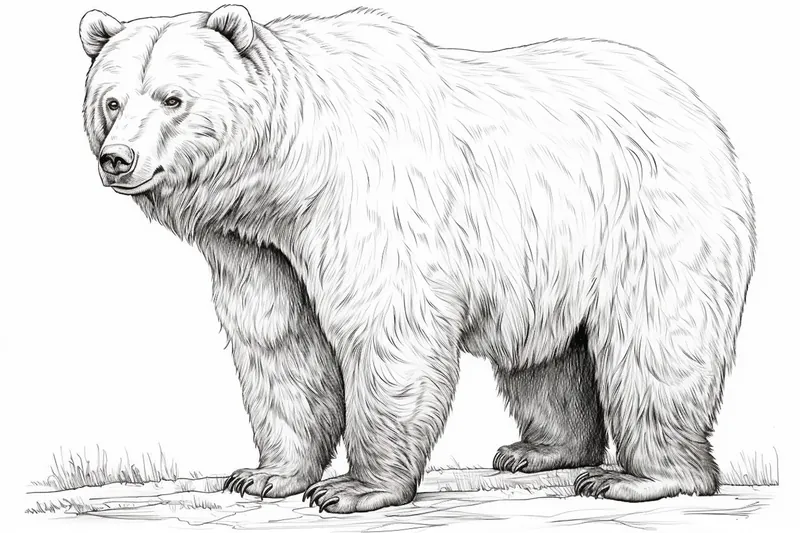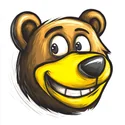How to Draw a Bear Step by Step
Learn how to draw a bear step by step in this easy-to-follow tutorial. Create beautiful bear drawings with this helpful guide for beginners.

Materials You'll Need
- Pencil
- Paper
- Eraser
In this article, we will walk you through various techniques that will help you create your very own bear drawing—regardless of your current skill level. All you need are some basic materials and a little bit of patience. By following our easy-to-understand instructions, you'll gain confidence in your artistic abilities and learn how to approximate the beauty and strength of bears in your artwork.
So, if you're ready to embark on this creative journey, let's gather our materials and get started on bringing your bear drawing to life!
Materials Required
Before we begin, let's gather the materials you'll need for this drawing:
Make sure to have all of these materials handy before you begin. Now, let's jump into the drawing process!



How to Draw a Bear: a Step-by-step Guide
Step 1: Gather Your Materials
Start by gathering all the necessary materials for your bear drawing. You will need a pencil, eraser, paper, and any coloring materials you may want to use later on.
Step 2: Outline the Body
Begin by drawing a large oval shape for the bear's body. This will be the main frame of your bear.
Step 3: Sketch the Head
Above the body, sketch a smaller circle for the bear's head. Make sure it is proportional to the body.
Step 4: Add Facial Features
Within the head circle, draw two small circles for the eyes. Add a small triangle for the nose and a semi-circle for the mouth.
Step 5: Draw the Ears
Extend two curved lines from the top of the head to create the bear's ears. Add inner details like fur or folds for a more realistic look.
Step 6: Define the Limbs
Extend four curved lines from the body to create the bear's limbs. Add small circles at the ends for the bear's paws.
Step 7: Add Details
Add fur texture by drawing small curved lines along the body and limbs. You can also add claws to the paws for more realism.
Step 8: Refine and Erase
Go over your sketch, refining any details and erasing any unnecessary lines. Make sure the proportions are correct and the features are well-defined.
Step 9: Add Color (Optional)
If you want to add color to your bear drawing, use colored pencils, markers, or crayons to bring your bear to life. Consider using shades of brown for a realistic look.
Step 10: Final Touches
Take a step back and look at your drawing as a whole. Make any final adjustments or additions to enhance the overall appearance of your bear drawing.
Step 11: Share Your Artwork
Once you are satisfied with your bear drawing, consider sharing it with others or displaying it in your art portfolio. Remember to sign your work and be proud of what you have created!
Tip: When drawing a bear, start with simple shapes to establish your proportions before adding details. Use a light pencil to sketch an oval for the body and circles for the head and joints, allowing you to adjust as needed. Pay attention to the bear's unique features, such as the rounded ears and the broad snout—these can be added with soft, curved lines. Once you're satisfied with the overall shape, gradually refine your lines and add texture by using short, flicking strokes for fur to create depth. Finally, don't forget to take breaks to step back and evaluate your work, ensuring that you capture the bear's powerful presence accurately.
Conclusion
Congratulations! You have successfully learned how to draw a bear step by step. By breaking down the process into simple and easy-to-follow steps, you were able to create a beautiful bear drawing. Remember, practice makes perfect, so keep drawing and experimenting with different techniques. With time and practice, you'll be able to create even more stunning animal drawings. Enjoy your newfound drawing skills!
Fun Facts About Bears
- Bears have an excellent sense of smell, which is thought to be seven times stronger than that of a dog. This helps them locate food sources from great distances.
- Despite their large size and powerful build, bears are capable of reaching speeds of up to 30 miles per hour when running.
- The polar bear is the largest species of bear and is considered the largest land carnivore in the world, with males weighing up to 1,500 pounds.
- Bears are highly intelligent animals and have been known to use tools, such as rocks or sticks, to aid in hunting or foraging.
- Bears are excellent swimmers and are known to swim long distances in search of food or suitable habitat.
- Bears are primarily solitary animals, with the exception of mothers with their cubs or during mating season.
- Bears are omnivores, meaning they eat both plant matter and meat. Their diet can vary depending on the species and their habitat.
- Bears hibernate during the winter months in colder regions, entering a state of reduced metabolic activity to conserve energy until food becomes more plentiful.
- Bears have a keen sense of hearing and can detect sounds at a frequency that is beyond the range of human hearing.
- Bears play an important role in their ecosystems as apex predators, helping to regulate prey populations and maintain a healthy balance in the food chain.
Suggestions for Scenes and Settings for Bear Drawings
- Bear in a lush forest setting, surrounded by tall trees and dappled sunlight filtering through the leaves.
- Bear fishing in a serene mountain stream, with the water gently cascading over rocks.
- Bear playfully rolling in a field of wildflowers, with the colorful blooms creating a vibrant backdrop.
- Bear standing majestically on a rocky cliff, overlooking a vast valley spread out below.
- Bear exploring a snowy winter wonderland, with snowflakes falling gently around.
- Bear lounging under a starry night sky, with twinkling stars and a crescent moon overhead.
- Bear sitting by a crackling campfire, with the warm glow illuminating its fur and the surrounding wilderness.
- Bear wandering through a misty, mysterious foggy forest, with twisted trees and hidden secrets.
- Bear interacting with other woodland creatures like squirrels, rabbits, or birds in a peaceful meadow.
- Bear relaxing in a cozy den, surrounded by soft fur blankets and scattered pine cones.
